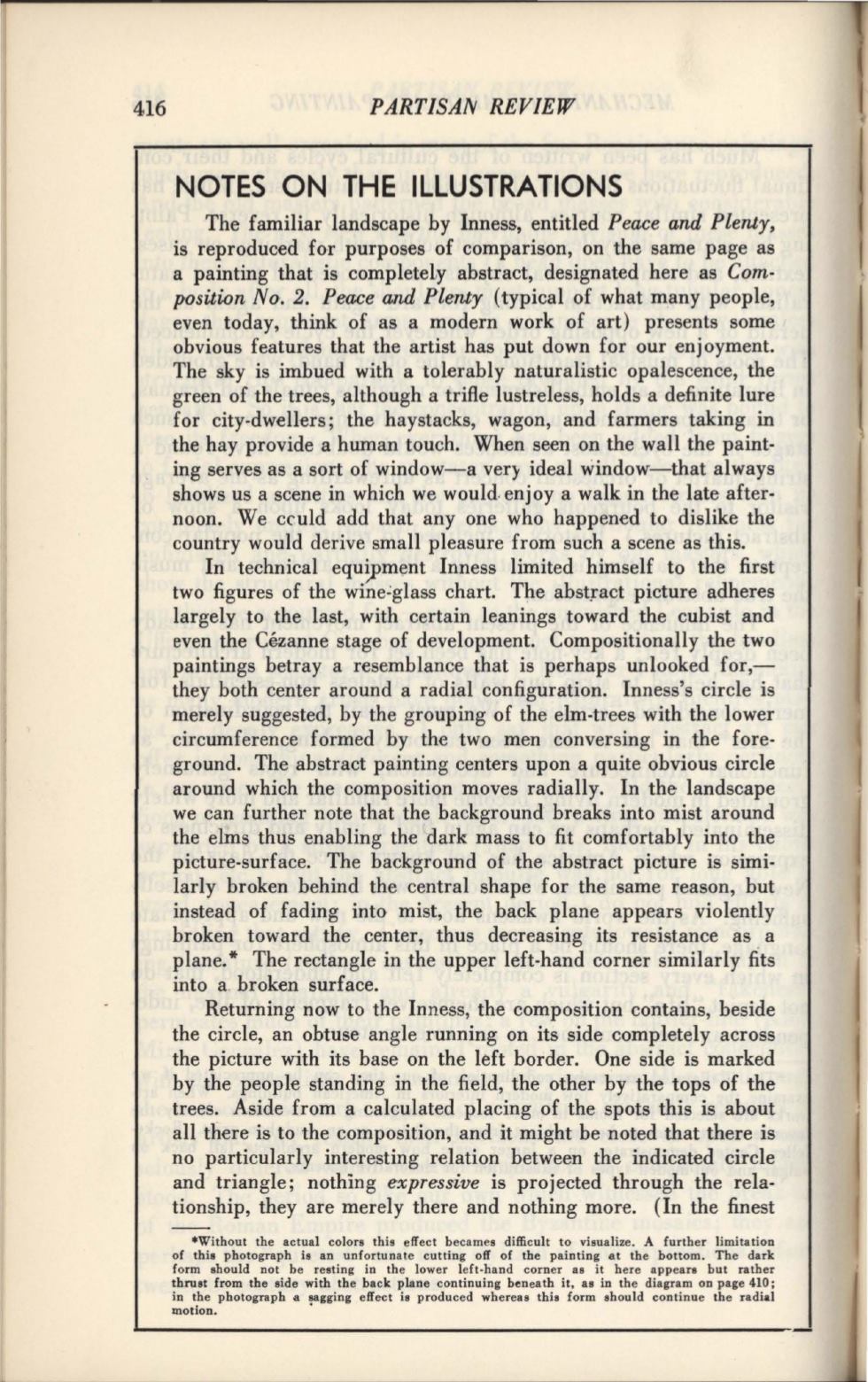
416
PARTISAIV REVIEW
NOTES ON THE ILLUSTRATIONS
The familiar landscape by Inness, entitled
Peace and Plenty,
is reproduced for purposes of comparison, on the same page as
a painting that is completeLy abstract, designated here as
Com–
position No. 2. Peace
and
Plenty
(typical of what many people,
even today, think of as a modern work of art) presents some
obvious features that the artist has put down for our enjoyment.
The sky is imbued with a toLerably naturalistic opalescence, the
green of the trees, although a trifle lustreless, holds a definite lure
for city-dwellers; the haystacks, wagon, and farmers taking in
the hay provide a human touch. When seen on the wall the paint–
ing serves as a sort of window-aver}' ideal window-that always
shows us a scene in which we would.enjoy a walk in the late after–
noon. We cruld add that any one who happened to dislike the
country would derive small pleasure from such a scene as this.
In technical
equ~ment
Inness limited himself to the first
two figures of the wine:glass chart. The abst;ract picture adheres
largely to the last, with certain leanings toward the cubist and
even the Cezanne stage of development. Compositionally the two
paintings betray a resemblance that is perhaps unlooked for,–
they both center around a radial configuration. Inness's circle is
merely suggested, by the grouping of the elm-trees with the lower
circumference formed by the two men conversing in the fore–
ground. The abstract painting centers upon a quite obvious circle
around which the composition moves radially. In the landscape
we can further note that the background breaks into mist around
the elms thus enabling the dark mass to fit comfortably into the
picture-surface. The background of the abstract picture is simi–
larly broken behind the central shape for the same reason, but
instead of fading into mist, the back plane appears violently
broken toward the center, thus decreasing its resistance as a
plane.* The rectangle in the upper left-hand corner similarly fits
into a. broken surface.
Returning now to the Inness, the composition contains, beside
the circle, an obtuse angle running on its side completely across
the picture with its base on the left border. One side is marked
by the people standing in the field, the other by the tops of the
trees. Aside from a calculated placing of the spots this is about
all there is to the composition, and it might be noted that there is
no particularly interesting relation between the indicated circle
and triangle; nothing
expressive
is projected through the rela–
tionship, they are merely there and nothing more. (In the finest
•Without the actual colon this effect becames difficult to visualize. A further limitation
of thia photograph is an unfortunate cutting off of the painting at the bottom. The dark
form should not be resting in the lower left-hand com er u it here appean but rather
thrutt from the side with the back plane continuing beneath
it,
as in the diagram on page 410;
in the photograph a sagging effect ia produced whereas this form thould continue the radial
motion.
·
'


